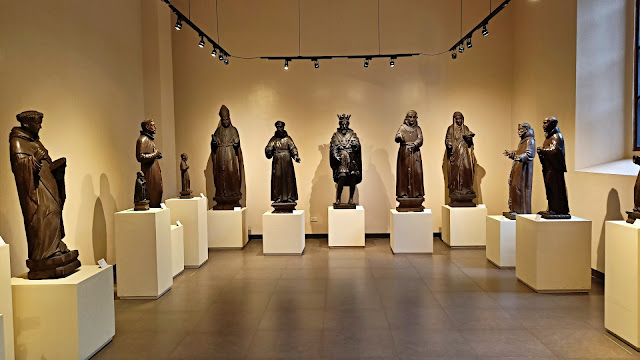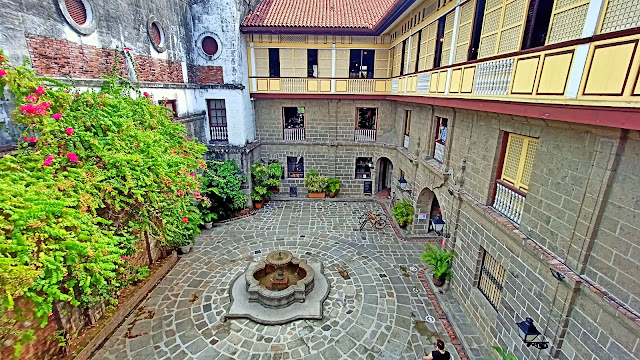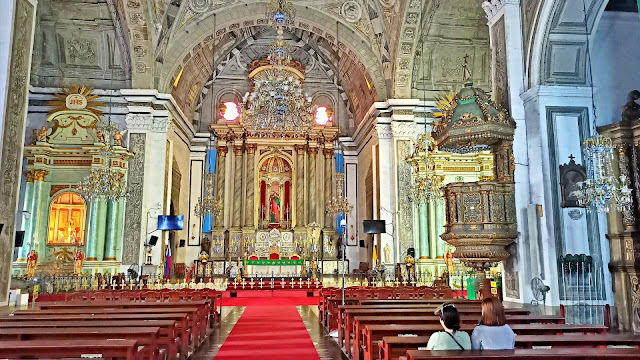Although I've visited Intramuros multiple times — excluding the time I was baptized at the Manila Cathedral — I've never gone on a thorough loop exploring its every nook and cranny. Once, I biked to Papakape, an artisan coffee shop inside Fort Santiago, Another time, I indulged in the flavors of several spirits and whiskey at the Destileria Limtuaco Museum, while the other times, it was on a date to Museo de Intramuros and attending a friend’s wedding at San Agustin Church. I’ve never really explored the whole Intramuros like a curious tourist before.
 |
| Admiring the thick walls of Baluarte De San Diego in Intramuros |
That's why I'm glad I went to the launch of Klook's "Intramuros Pass"—a tour designed to let tourists customize their Intramuros experience with options to choose where to go and how to explore it: by foot, by a Bambike (bamboo bike) or by an Electric Chariot (segway ride).
 |
| Book an Intramuros tour just with a few clicks on your Klook app |
Klook and the Intramuros Administration gave us a tour of Manila's walled city in the afternoon so that we could experience what it's like to rediscover Intramuros. These are some of the attractions we visited.
Museo de Intramuros
Religious art played a major role in the evangelization of most of the Philippines during the Spanish colonization period. To aid in their catechizing efforts, Spanish friars commissioned local artists to create paintings, sculptures, engravings, and metalworks depicting biblical scenes and holy figures.
 |
| Early 18th century religious art pieces are displayed in different galleries |
The Museo de Intramuros, which is presently located on the original site of San Ignacio Church (1899 - 19445), has collected, preserved, and displayed some of these religious art pieces discovered throughout the country. Unfortunately, most of the artists who created these magnificent artifacts from the late 17th and early 18th centuries remain unknown.
A visit here will not only illuminate the importance of religious art in our Christianization but will also provide insight into the talents of nameless and faceless Filipino artists from bygone generations.
Casa Manila Museum
Casa Manila Museum is a replica of the 1850s San Nicolas Mansion that originally stood along Calle Jaboneros in Binondo, Manila. Designed by architect J. Ramon L. Faustmann, Casa Manila was constructed in 1980 on one of Intramuros' founding villages, Barrio San Luis, directly across from San Agustin Church.
 |
| Art works even spreads to the ceiling inside Casa Manila Museum |
Depicting a typical Filipino "ilustrado" home, the house showcases a series of living quarters including a library, kitchen, music and study room, oratorio (prayer room), and even a banquet hall, decorated with antique furniture pieces and ornaments made in China and Europe and by local artisans.
 |
| Fine wood craftmanship is in full display inside the museum |
Blending perfectly with the foreign objects are indigenous elements like the Capiz windows, antique treasure chests, and other symbols of Filipino artistry and carpentry works. Each room comes with a different ceiling design that stood out thanks to its intricate metalwork influenced by the plasterwork seen in old houses in Europe.
 |
| The courtyard of Casa Manila Museum |
Casa Manila clearly shows how the affluent families from the 19th and early 20th century build and style their mansions, drawing inspirations from the Spanish-inspired balconies to the quirky color amalgamations of the "sawn and carved" look of Victorian-style, to the classic components of a Filipino colonial house.
Fort Santiago
Fort Santiago, perched on the banks of the Pasig River, is a mute testament to Manila's turbulent past. The crumbling fortresses of Spanish imperial power now reverberate with the voices of the past.
 |
| RHCP's Flea once posted a photo of this on his IG |
A former citadel constructed in 1571 by Miguel Lopez de Legazpi, Fort Santiago witnessed some of Manila's bloodiest episodes during the Spanish colonial era and up until World War II. Our national hero Jose Rizal was imprisoned here shortly before his execution in 1896. From the Rizal Shrine housed inside the fort walls that showcase many of his personal belongings, one can also follow the bronze footprints engraved on the ground tracing his final trek to the then Bagumbayan.
Baluarte de San Diego
Originally constructed between 1591-1594 to serve as a projection platform for artillery defense against invaders coming from Manila Bay, this mediaeval structure is highlighted by its thick three-tier circular walls made of large blocks of stones and a curtain of walls. The San Diego complex, which actually houses another structure: the ruins of Torre de Nuestra Señora de Guia (Our Lady of Guidance), was designed by Antonio Sedeño, a Jesuit priest and architect.
 |
| The circular walls of Baluarte San Diego |
After a large part of the bastion was excavated from 1979 to 1982, a circular outer structure revealed its whole form. Today, the bastion is surrounded by manicured lawns leading to San Diego Garden and dotted with gazebos and pergolas. The guard told us that sometimes, a wedding reception is even held there.
San Agustin Church
One of the Baroque Churches of the Philippines designated as a World Heritage site by UNESCO, the San Agustin Church is another important landmark inside Intramuros.
 |
| My bestfriend Jacobsladder got married here |
Also known as the Church of Saint Augustine, it is the oldest stone church in the country, being built in 1607. Patterned after the magnificent temples built by the Augustinians in Mexico, the Church gives a medieval vibe adorned by giant chandeliers, a baroque pulpit, a grand altar, a crucifix from the 16th century and a plethora of elaborate artworks and sculptures.
Also, don’t miss the San Agustin Museum which is housed in the former Augustinian monastery next to San Agustin Church. Inside, one can find a collection of religious artwork and relics on display, all illuminating the long and storied history of Catholicism in the Philippines.























